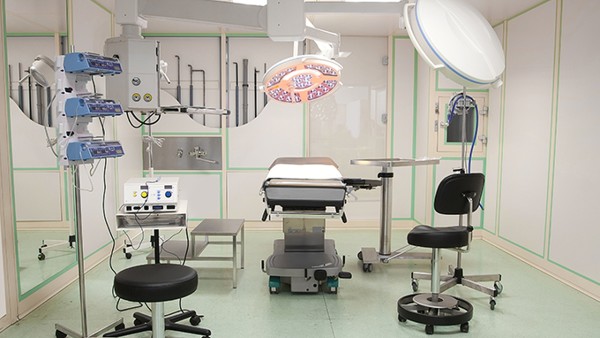New Understanding of Cesarean Section and Maternal and Infant Health Risks

Introduction
Cesarean section (C-section) is a surgical procedure to deliver a baby through an incision in the mother's abdomen and uterus. It is the most common major surgery performed on women in the United States, with about one in three births occurring via C-section.
Traditionally, C-sections have been associated with a higher risk of maternal and infant complications compared to vaginal delivery. However, recent research has shed new light on the risks and benefits of C-section, leading to a more nuanced understanding of their impact on maternal and infant health.
Maternal Risks
Short-Term Risks
Bleeding: C-section can cause more bleeding than vaginal delivery, leading to a risk of anemia and blood transfusions.
Infection: The surgical incision can become infected, leading to sepsis and other complications.
Blood clots: C-section is associated with an increased risk of blood clots in the legs or lungs (deep vein thrombosis and pulmonary embolism).
Uterine rupture: In rare cases, the uterus can rupture during labor in women who have had a previous C-section.
Maternal death: C-section is associated with a slightly higher risk of maternal death compared to vaginal delivery, although the absolute risk is still low.
Long-Term Risks
Placenta previa: Women who have had a C-section are at increased risk of placenta previa in future pregnancies, where the placenta attaches to the lower part of the uterus and covers the cervix.
Placental abruption: C-section also increases the risk of placental abruption in subsequent pregnancies, where the placenta separates from the uterus before delivery.
Uterine rupture: The risk of uterine rupture is higher in women who have had multiple C-sections.
Scar tissue formation: The surgical incision can leave scar tissue, which can cause pain and discomfort during future pregnancies and deliveries.
Infant Risks
Short-Term Risks
Respiratory problems: Babies born via C-section have a slightly higher risk of respiratory problems, such as transient tachypnea of the newborn (TTN).
Neonatal infection: C-section increases the risk of infection in newborns, particularly if the mother had an infection before the surgery.
Prematurity: C-sections are often performed prematurely, which can lead to increased health risks for the baby.
Birth defects: Some studies have suggested an association between C-section and an increased risk of certain birth defects, such as cleft lip and palate.
Long-Term Risks
Childhood obesity: Children born via C-section have a slightly higher risk of developing obesity later in life.
Allergic diseases: Evidence suggests that C-section may increase the risk of allergic diseases in children, such as asthma and eczema.
Metabolic disorders: Some studies have linked C-section to an increased risk of metabolic disorders, such as type 2 diabetes and insulin resistance.
Factors Affecting Risks
It is important to note that the risks of C-section can vary greatly depending on various factors, including:
Reason for C-section: The risk is higher in emergency C-sections performed for life-threatening complications.
Gestational age: C-sections performed at earlier gestational ages are associated with higher risks for both mother and baby.
Maternal health: Women with underlying health conditions or overweight/obese women face higher risks.
Surgical complications: The type and severity of surgical complications can significantly impact the risks.
Balancing Risks and Benefits
Ultimately, the decision of whether to have a C-section should be made in consultation with a healthcare provider who can assess the individual risks and benefits for both mother and baby.
In some cases, C-section may be medically necessary to protect the health of the mother or baby. In other cases, a vaginal delivery may be possible and preferred based on the lower associated risks.
Promoting Vaginal Delivery
Efforts should be made to promote vaginal delivery when possible and safe. This includes:
Induction of labor: Inducing labor may increase the chances of a successful vaginal delivery in certain cases.
Augmentation of labor: Medications or procedures can be used to strengthen contractions and help the baby descend.
Vaginal birth after cesarean (VBAC): Women who have had a previous C-section may be able to have a successful vaginal delivery in subsequent pregnancies.
Conclusion
The understanding of the risks and benefits of cesarean section has evolved over time, leading to a more individualized approach to decision-making. While C-section can be necessary in some cases, promoting vaginal delivery is generally preferred due to its lower associated risks. By balancing risks and benefits, healthcare providers and expectant mothers can work together to make informed choices that prioritize the health of both mother and baby.
The above is all the content that the editor wants to share with you. I sincerely hope that these contents can bring some help to your life and health, and I also wish that your life will be happier and happier.
Topic: #cesarean #section #of













